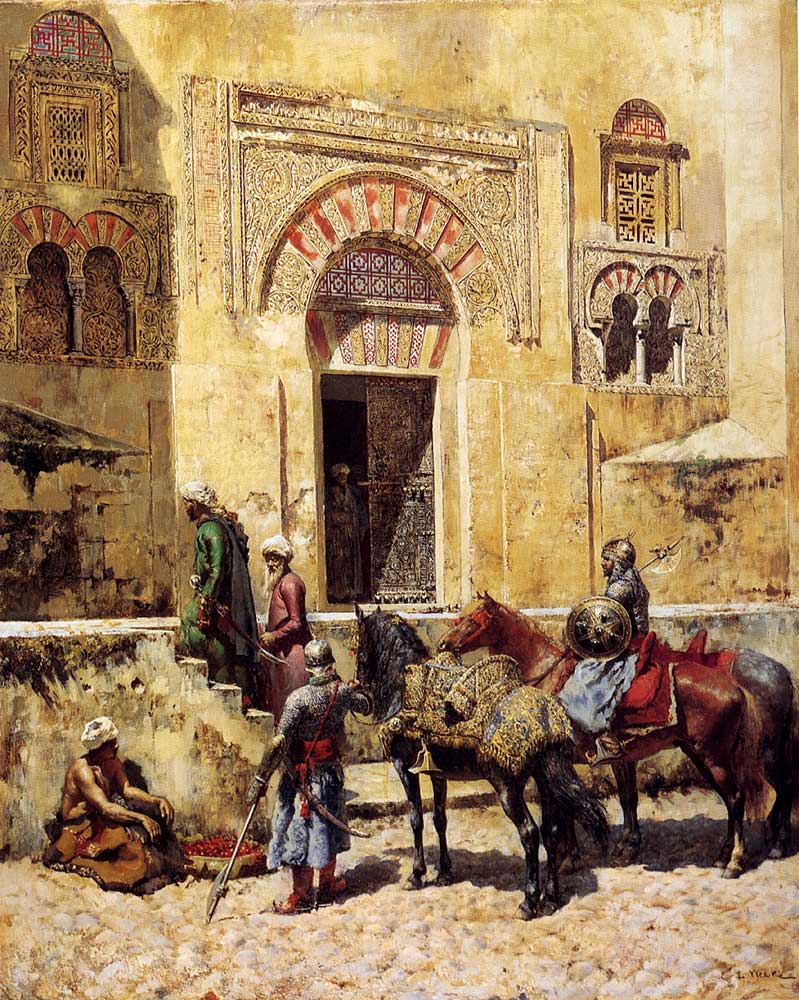There is a bit of a confusion when dealing with Spain during the Islamic years. These terms are clear only to a small percentage of well read people. It is however confusing for the rest of us, common folk, who have not the required knowledge nor the time to learn seven centuries of our history.
We use with little to no care the terms Moor, Muslim, Arab, Mudejar… and sometimes even as synonyms for each other. Other terms to refer the civilizations that occupied the peninsula such as Muslimes or Miramolines were lost and are no longer used. Let’s get on with the first task at hand.
Muslim
Refers to the person that practices Islam, the Faith, the religion of the Quran, and that would include Arabs, Moors, Indonesian, Afghans… It is not an ethnic categorization but a religious one. It is not a notion that ends with a frontier it refers to all sorts of Islam followers.
Arab
Refers to that who is original from Arabia, in other words, the Arabian peninsula. A Moroccan is not an Arab but a Yemeni citizen is. Abd al-Rahman I, from the Umayyad dynasty that ruled most of the Iberian peninsula as an independent Caliphate, was an Arab; Boabdil on the other hand was a Moor and sultan of the Kingdom of Granada.
Moor
By far the most used of these terms. Moor comes from the word Mauritania, that is the region comprising Western North of Africa up until the Dessert. The people living in those latitudes have a skin color that range from the Mediterranean white to the dark of the Berber in the dessert. The Almoravid and Almohad dynasties were both Moor, that is, they originated in Mauritania, and they were both hostile to each other. The civil wars between these two Islamic Moorish factions meant the beginning of the end for the Muslims in Spain. To sum it up, Muslim Spain was first ruled by Arabs and then by Moors. However, the society at either side of the frontier (Muslims and Christians) was always a multi-ethnic and religiously diverse one with Moors, Arabs, Visigoths, Muslims, Jews and Christians.
Morisco
Refers to the Moorish population that remained in the Peninsula after 1492, before that they were known as Mudejars. They mainly inhabited the former kingdom of Granada (including Málaga) and the kindgom of Valencia, although it is widely known that there were many other places were Moriscos lived. Up until their final eviction in the XVIth century –for they were forced to either convert to Christianity or leave the peninsula– Moriscos were frequently revolting against the Crown, on the other hand, the Crown kept always an eye on them. Because of that many of them established high in the mountains were access was not easy. Those marvelous white villages in the mountains of Granada and Málaga were built by their kin; that is the heritage that this hardened-by-war nation left Spain.
Mozarabs
Refers to that Christian living under Muslim rule. San Pelagio, Justa, Rufina and so many other martyrs were Mozarabs. The term is also used to designate an architectonic style and technique. Most of the shrines and other Faith related buildings in the peninsula and the South of France were Mozarab constructions. This particular fashion was in part influenced by the Córdoba-Arab techniques which in turn are greatly influenced by Byzantium. It is considered one of the main tradition that later resulted in Romanic architecture.
Mudejar
Refers to the Muslim population that decided to stay and live under Christian rule. It is a pejorative term that translates to “domesticated”. However, the term also designates a particular architectonic style. The refinement and ornamentation techniques that the Muslims (Arabs and Moors) brought to the peninsula were unheard of to the austere Christians and were greatly demanded. All the Lords and religious leaders would turn to Mudejar masters and builders to build their temples and palaces. Aragón is, however, the region were the Mudejar style would be most employed. As of today it is considered as a genuine Spanish architectonic style. On the other hand, the popularity of this style resulted in a weak presence of Gothic constructions that flourished in Europe at the same time.
And that is all! As you can all see it is a delicate manner that needs precision and precaution in equal amounts.


